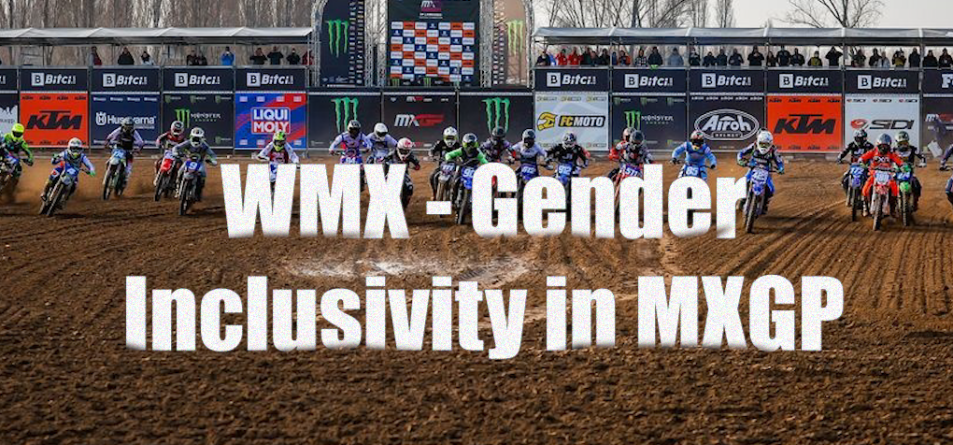FIM Women Motorcross World Championship runs in selected MXGP Rounds with the Opening Round of the 2022 6 Round Series starting at MXGP of Lombardia on March 6. WMX riders from 11 Nationalities competed in Qualifying and Race 1 on Saturday, followed by Race 2 on Sunday with total of 23 competitors vying for sought after points on table board.

Best lap times of top WMX finishers were comparable with MX2 and EMX250 results, with WMX Race 1 winner Lynn Valk best lap time slotting in at 20th and 24th place in both MX2 and EMX 250 Race 1 standings and WMX Race 2 winner Nancy Van de Ven best lap time slotting in at 20th and 21st place in MX2 and EMX250 respectively.
In 2017, WMX Champion Kiara Fontanesi became the first woman to compete in MX2 World Championship racing MXGP of Europe on the black sands of Valkenswaard. Finishing 35th Overall, the only 2nd WMX rider to race MX2 was Larissa Papenmeier entering Grand Prix of China in 2019, finishing 16th Overall.
In terms of gender inclusivity of WMX in FIM World Motocross Championship, the all female Series has cemented women MX rider’s status at the highest level since the first Women’s MX World Cup in 2005 evolved to WMX Championship in 2008. For the past 17 years, WMX Championship has showcased the world’s best women MX riders at selected MXGP Rounds through Live TV coverage of racing, pre and post race interviews, up-dates of results across all website and social media platforms along with awarding the 5 WMX Champions at the annual FIM Awards Ceremony.
In terms of gender inclusivity within MXGP/MX2/EMX250, WMX riders have remained on the side-lines. To compete on level playing field on track against male counterparts, women fall short on producing lap times comparable with top riders due to various differences of physique, financial backing and risk that results would not provide sustainable traction to compete for continued seasons.

And here is the change. Shifts on the meaning of gender inclusivity has produced different perspectives on women racing with men within varying Motorsport disciplines. The all electric car Series, Extreme E requires Teams to provide 2 drivers: male and female to race determined course alternating driver’s within race duration. The gender balance within each Team has aligned female-male duo for performance results as opposed to female vs male.
Rally, Endurance car racing- 24 Le Mans, and recently Formula racing Teams have enlisted female/male drivers and co-drivers to race, test and produce results on tracks. Such gendered partnerships during racing as well as within Team structure have re-defined how results are achieved while at the same time remaining gender balanced.
For WMX, MXGP, MX2 and EMX World Championships, racing has always been characterized by rider vs rider- regardless of gender. By switching the parameter to Team vs Team inclusive of female and male riders, as in the case for Motocross of European Nations and FIM Motocross of Nations, a level playing field has been established on and off the track. WMX riders gain inclusive opportunity to produce results along-side their Team’s male rider’s and also adjust the belief that females are unable to race against males on a MX bike.
With total of 23 WMX riders competing in MXGP of Lombardia, and total of 92 male riders competing in MXGP, MX2 and EMX250 combined, there is no doubt room remains available for greater gender inclusivity within FIM World Motocross Championship. No doubt, push to gain gender balance will become shove- not least prompted by what has already occurred in current Motorsport disciplines around the world.
Header photo: WMX Round One Race One Image: MXGP.
Words: Sharon Cox.





Comments are closed.